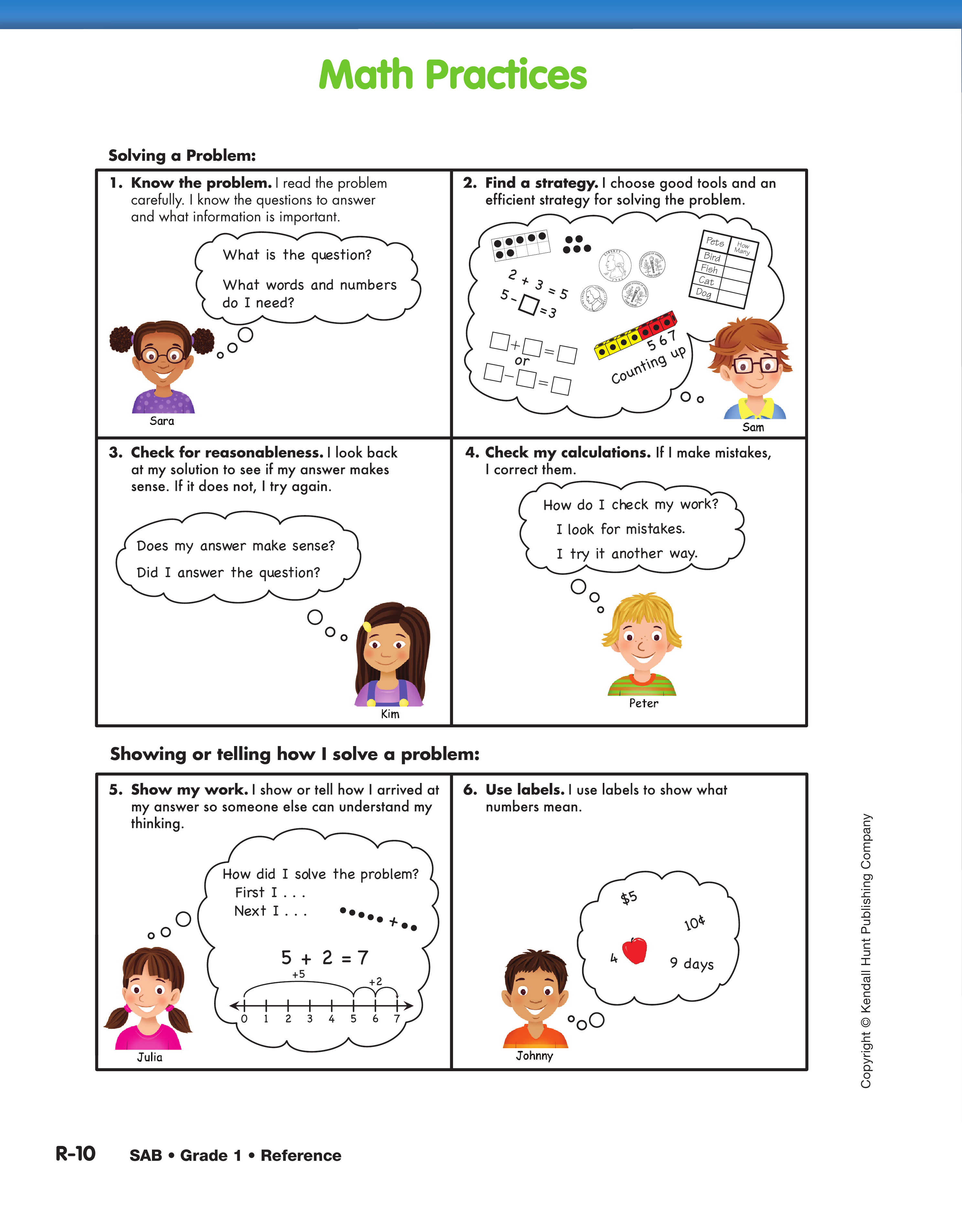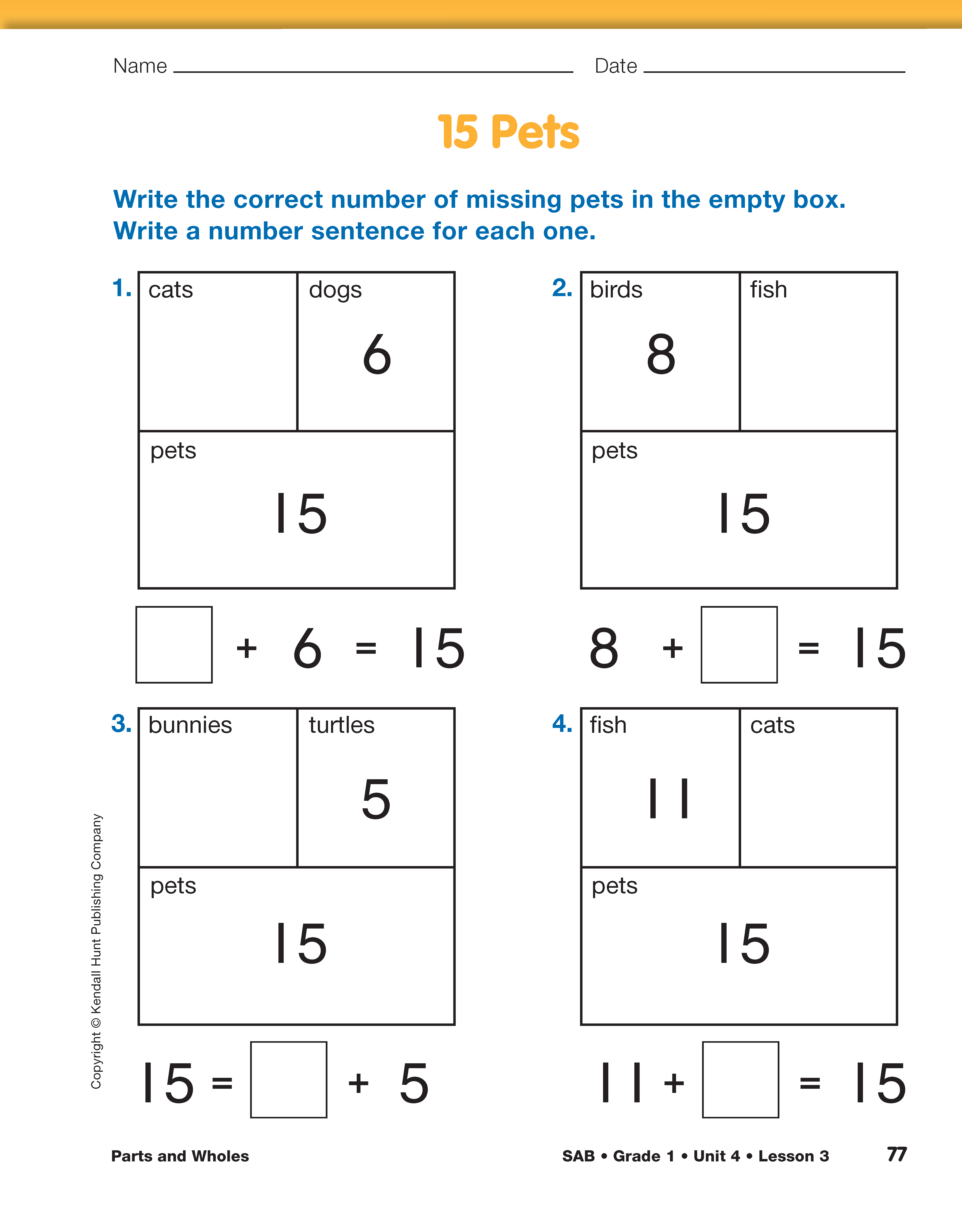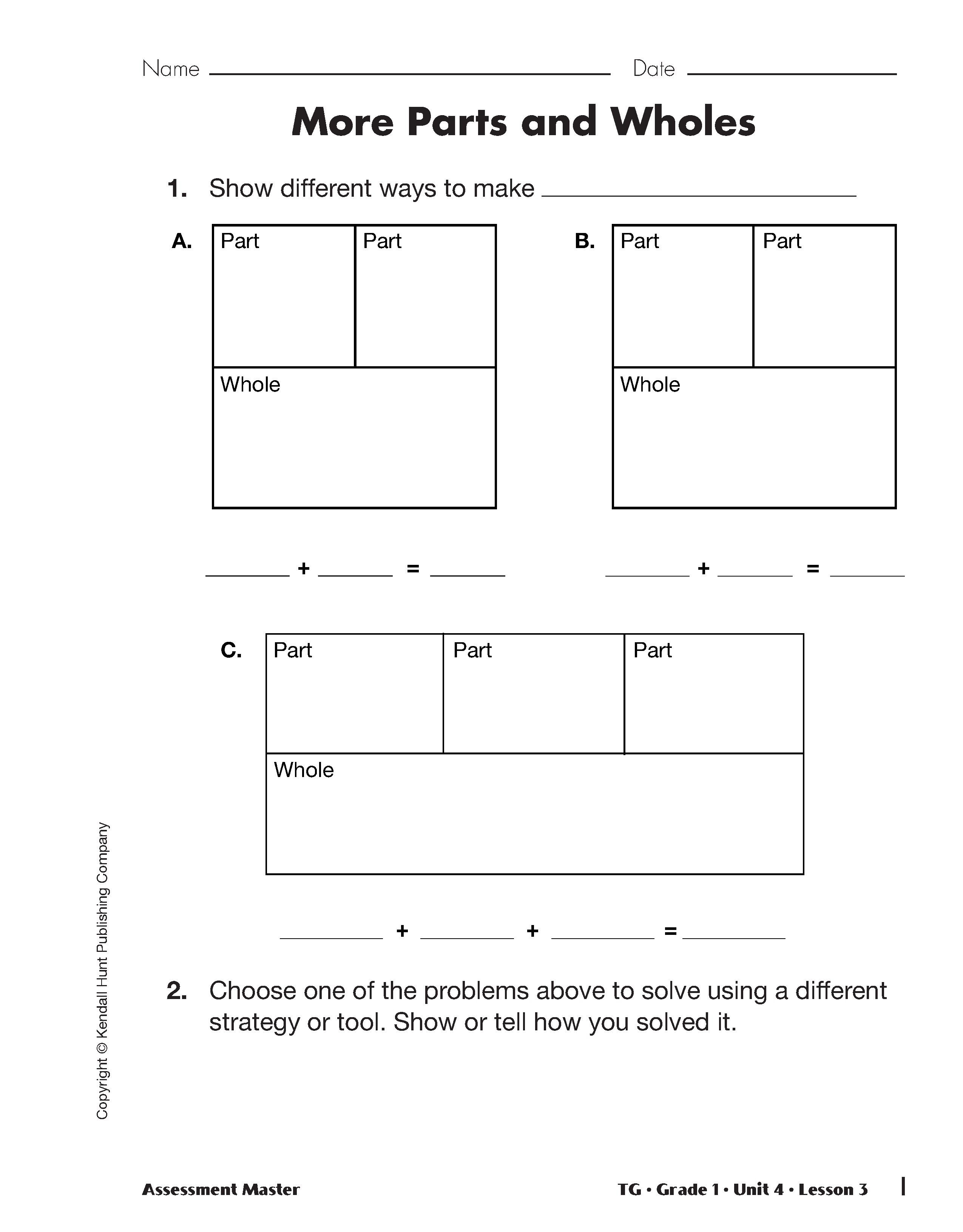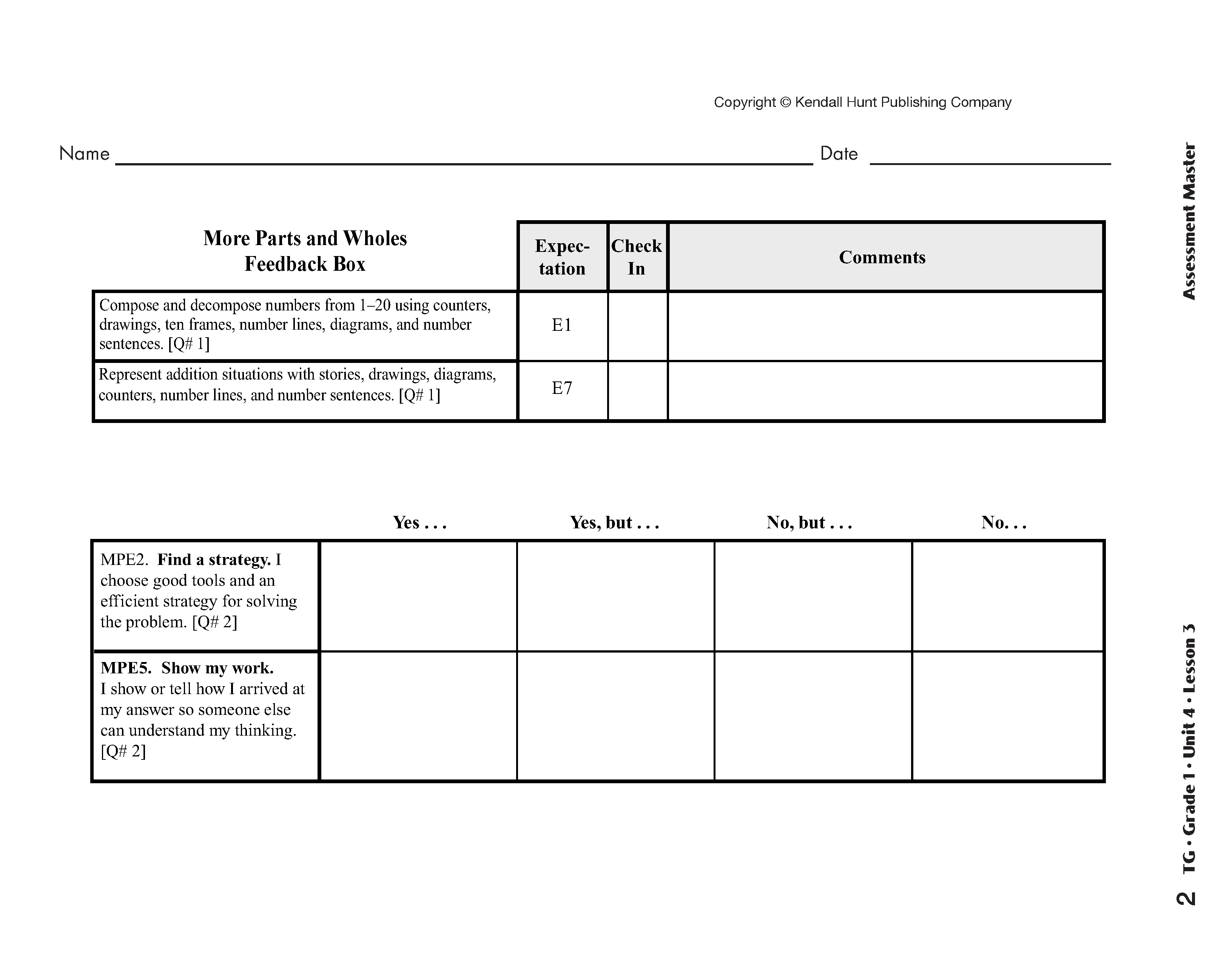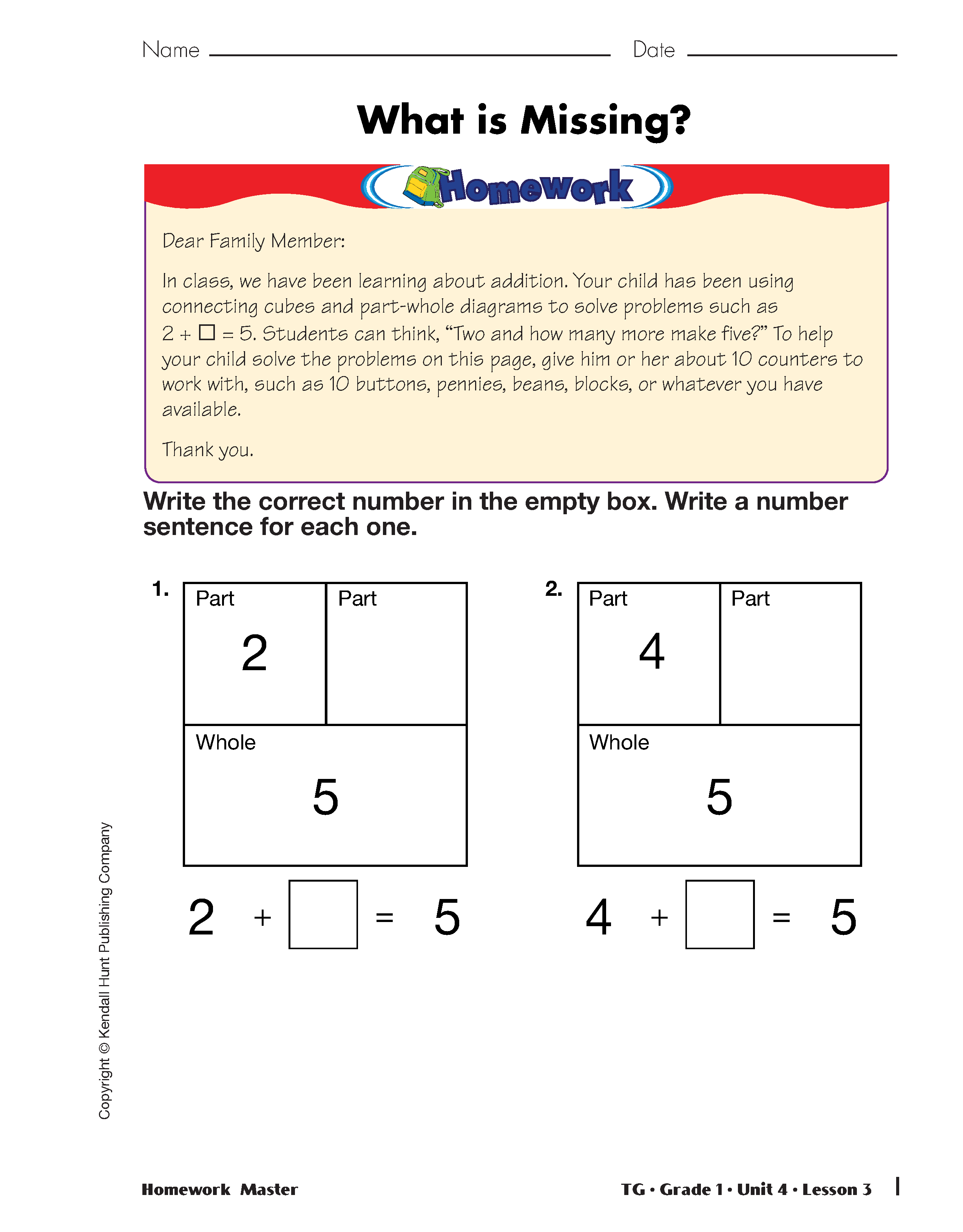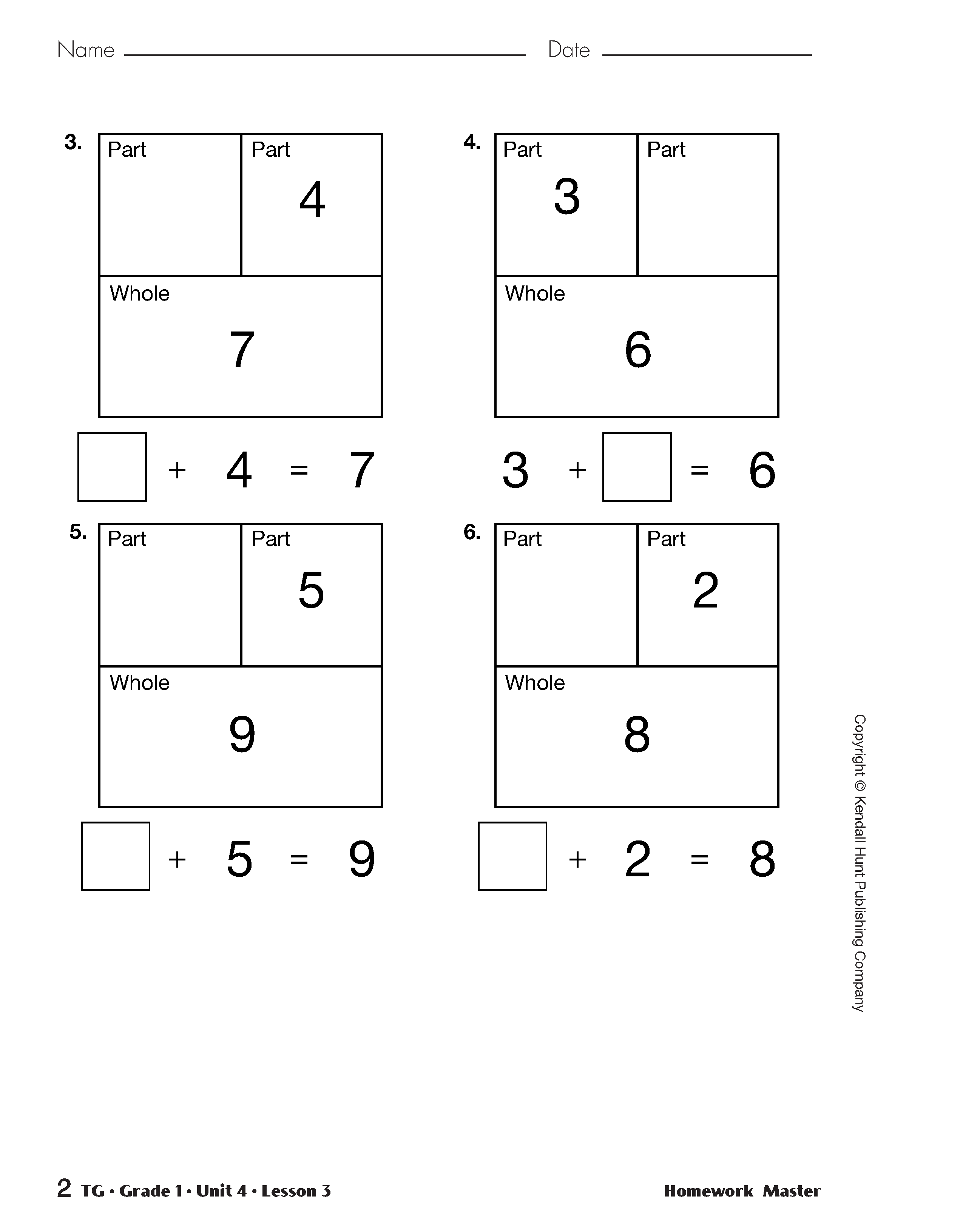Display the Math Practices page from the Student
Activity Book Reference section. Students will need
calculators and the tools they used to solve problems
on the 15 Pets page. Remind students that Math
Practice Expectation 2 is Find a strategy. It is
important to choose good tools and strategies to
solve problems. Math Practice Expectation 5 is
Show my work. Review how mathematicians show
or tell how they arrived at their answers so someone
else can understand their thinking. During the discussion, display student-generated number sentences. Have students use calculators or other tools
to check them.
- Which tools or strategies did you use on the hard
problems? Which did you use on the easy ones?
- What strategies or tools did you use to solve
+ 6 = 15? (Possible response: I put 15 cubes in
the "whole" box of the diagram, the "pets" part. I
moved 6 to one of the "part" boxes, that showed
the dogs. I had 9 left so I knew that was the missing
"part" of 15. 9 cats were missing from the
group of pets.)
- Is there another way to solve this problem?
(Possible response: I used a number line. I knew
6 was one part and that 15 was the whole. I
needed to hop 9 units to get from 6 to 15, so the
answer is 9.)
- What keys on the calculator do you press to check
the answer? (9 + 6 = )
- Are there other ways not listed on the page to
make fifteen with two or three parts? Show or tell
us how you solved this problem. (Possible
responses: 14 + 1, 13 + 2, 12 + 3; I made a
train of 15 connecting cubes and then took 3 off.
I counted the remaining cubes to find 12.
12 + 3 = 15.)
- Which tools and strategies were the most helpful?
Assign the More Parts and Wholes Assessment
Master for students to complete individually. Choose
an appropriate number to partition and ask students
to write it on the top of the page. Students should
have the appropriate number of cubes. Allow them
to use ten frames, number lines, and calculators as
well.
To adjust the level of difficulty for individual students using
the More Parts and Wholes Assessment Master, assign
numbers based on students' abilities.
Assign the What Is Missing? Homework Master.
Use the More Parts and Wholes Assessment Master with
Feedback Box to assess students' abilities to compose and
decompose numbers 1–20 using diagrams, number
sentences, and other tools [E1] and represent addition
situations with diagrams and number sentences [E7].
This assessment can also be used to determine students'
abilities to find a strategy [MPE2] and show work [MPE5].
Copies of the Parts and Wholes pages, ten frames, connecting
cubes, counters, and number lines can be placed in a center
for targeted practice on these Expectations. Write different
numbers for students to partition at the top of the first page
or allow students to choose their own numbers.















